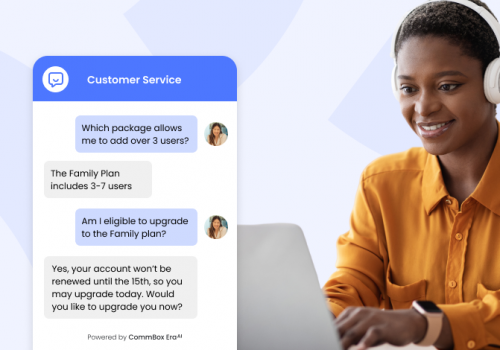Customer Experience in Banking Sector. Customer experience is the new business buzzword. Every sector is now focused on providing an excellent customer experience, and the financial sector is no different. Customer experience is particularly important in banking because customers have such a vast range of options to choose from and they are also much more careful about their choices. It’s this cautiousness that separates banking from other sectors. A customer might take a chance on trying a new brand of headphones, but for them to try a new bank, they need to be convinced.
Banking is highly competitive, and banks must prove that they can offer customers something that their competitors can’t, or that they can do it better!
Historically, the banking sector has been criticized for being slow to adapt to customer experience innovations. This was due to several factors. For example, traditional banks usually have large amounts of legacy infrastructure and policies that can make adopting new tech a logistical nightmare. There was also less pressure to innovate in the past. Customers would usually stay with one bank for a long time, maybe their entire life. However, times have changed. Customers are now much more comfortable with shopping around. Thousands of reviews are just one Google search away!
There has also been a big surge in digital banks. These online-only new kids on the block have shaken things up for traditional banking. While most consumers still use a traditional bank as their primary bank account, more and more consumers are opting for a digital bank for their second account. They are now exposed to these new cutting-edge customer experience features. Not only are they aware of them, but they are starting to get frustrated at traditional banks for not having them. The logic is simple: How can this new small bank offer all of these features that my huge and long-standing bank can’t? As soon as consumers start asking the question, they form their own answer. The answer is this “my traditional bank is capable of doing this, they just choose not to”.
With more and more consumers reaching this conclusion, traditional banks are starting to wake up and work towards innovating customer experience solutions. With this in mind, here are our top tips for delivering the best customer experience in the banking sector.

10 Tips You Can Use to Deliver the Best Experience
1. Collect Data Across all Touchpoints
Before you can implement a plan to deliver a better customer experience, you first need to know how your customers feel right now. It’s important to collect customer experience data across all of your touchpoints to see whether your customers have a consistent experience, or whether it differs from channel to channel. Your goal should be for your customers to have a consistent experience worthy of your brand no matter which touchpoint they use. By collecting data across all touchpoints, you can catch any glaring holes in the customer experience and start by patching these first.
- Physical Location: Find out how your customers feel about your in-person services that take place in your branch. You can send a short survey immediately after the customer leaves the brand. A text message is a good option here because the customer will likely see a text message before an email and will respond to it quicker. Surveys always get the most accurate results when the experience is still fresh in the customer’s mind. However, it’s important to note that if the customer said they don’t want to be contacted via text, then you should opt for email instead. Ignoring their requests may result in a more negative experience.
- Website: You can use a quick customer satisfaction survey on your website once your customer has completed an action. For example, if they have transferred money or paid for something, you can ask them about their experience with your website. You can also send out a longer survey over email to ask more specific questions about the look and feel of the website and how responsive it is on different devices.
- Customer service feedback: Collect feedback after a customer has talked to customer service to try and resolve their problem. This can help you spot where the friction points are. Do customers have to wait a long time to get through to an agent? Do they get routed to the right agent straight away or are they passed around?
2. Offer Multiple Communication Channels
If the only option, your customers have is to call you then it’s time to change. This is far too restrictive and not everyone is comfortable on the phone or has the time to take out of their day. Instead, you should offer multiple support channels. Chatbots are a great way to address frequent and simple questions that are best kept away from your call center. The more customers who call your contact center, the busier the phone lines will be. This means there will be customers waiting for a long time to speak to an agent when they have a complex problem that is causing them a lot of frustration. By limiting their communication options you’re only adding to that frustration.
Communication channels you should offer:
- Chatbots – Great addition to your website and can handle most simple requests.
- Live Chat – Agents can respond to multiple customers at once. Customers can engage on their own terms.
- Phone – Customers with more complex problems may opt for phone support because it’s easier to explain a long or complex problem over the phone.
- Contact form/Email – Some customers prefer to use email so they have an easier retrievable copy of their interaction with the bank.
- SMS: A great option for customers who don’t have immediate access to internet support services but don’t want to call.
- WhatsApp/Facebook Messenger support: Be where your customers are! Your customers are most likely using these services and know exactly how they work. This means there is less friction.
- Social Media: Respond to customers on your social media accounts. You can pass the customer to the most appropriate person to solve their issue and mitigate any damage from the complaint being public.
3. Find Friction Points
Put yourself in the customer’s shoes and try to find any friction points in the customer journey. How many steps do customers have to complete to open an account with you? Do some customers give up before they finish making the account? Is there a specific point where the majority of these consumers abort their actions? If so then it means that there’s something in that part of the customer journey that is causing substantial friction. Some friction might be necessary. For example, it’s common for banks to perform a credit check when opening a new customer account. If most customers who abort leave at this point, then you might feel stuck. If this is your policy then you can’t remove this step.
However, you can make it clear that this step will be necessary before they even start the process. This way you won’t frustrate customers who get all the way to that point and then find that your bank isn’t a good fit for them. Try to be as upfront as possible without overloading the customer with too much information.
4. Omnichannel Platform
If you’re using multiple legacy systems, then it’s time to take a new approach. Omnichannel platforms are booming right now for several reasons such as:
- Improved synergy across departments – Remember how we said consistency is important? How can you expect to provide a consistent customer experience when there isn’t consistency within the company?
- Data collection and analysis – When all your data is collected and analyzed in one place you get more meaningful results. You don’t have to contend with missing, erroneous, or duplicated data and cause misleading results.
- Training and Onboarding – Your new and existing staff only have to be trained on one system rather than several.
- Simple and cost-effective – You get a lot of utility from one platform and the costs are transparent. You’re not locked into several different contracts or licensing for software that all expires at different points.
5. Automation
All banks are using automation in some form, but should you be using more? The answer is almost definitely yes. There have been huge leaps forward in automation and you can greatly improve customer experience by maximizing on these. You can use predictive analytics to anticipate when customers will want to use your services and market to them accordingly. Do you have customers in their late 20s or early 30s who are currently renting and have stable employment? These customers are probably preparing to buy a house at some point in the future. This marketing can be automated.
Chatbots are another great example of customer service automation. There are a lot of options, you just need to pay attention to what your customers want and how you can best deliver it to them.

6. Take Action Immediately
Nothing frustrates customers more than making them feel ignored or abandoned. If you get a customer complaint, address it as soon as possible. This applies to complaints across all channels. In recent years more customers have started using Facebook or particularly Twitter to complain solely because they get a faster response. Companies don’t like when the whole world can see a complaint. This is understandable, but acting quicker on social media than other channels can make you appear insincere. Show you care about all of your customers, not just the ones who can damage your reputation.
7. Listen to Customer Feedback
The purpose of collecting feedback is to know where you can improve. Once you have the answer, it’s time to take action. You might not be able to accommodate every customer request, but you should make a roadmap for the ones you plan to implement. Once the project is underway, you can even inform your customers that their feedback was listened to and that you’re working on improving the service. However, be careful not to make promises too soon in the project.
8. Build Flexibility into Your Banking Service
Customer needs and expectations change over time. The key is being able to adapt to this change and continue to offer competitive features that offer an excellent customer experience. Reduce your reliance on rigid systems or policies that make it harder for you to implement change.
9. Find Out What Your Loyal Customers Like
Do you have long-standing loyal customers? Design a survey specifically for them to find out what they like about your bank. The purpose of this is two-fold. Firstly, you can identify any standout features you have and include these in your marketing. You can also work to improve these features even more. Secondly, it will help you determine whether these customers love your services or whether they just find them acceptable enough not to look for an alternative. Being acceptable might work for keeping the customers you have, but it’s unlikely to encourage new customers through the door.
10. Listen to Your Employees
Talk to customer-facing employees to find out what they think customers like or dislike about your service. These employees spent a lot of time talking to your customers and know them better than anyone else.















